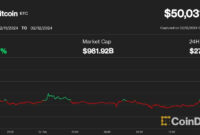7 Things to Learn About Cardano (ADA) Before You Buy it !
Cardano is a cryptocurrency that has flown under the radar and could be poised for a breakout.
Launched in 2017, Cardano (ADA) is often referred to as a third-generation cryptocurrency. It builds on what Bitcoin and Ethereum have done, while aiming to be more sustainable and scalable. That means it’s much more environmentally friendly, faster, and more secure.
Even though it has quite a bit of potential, Cardano hasn’t gotten much mainstream attention yet, and it’s considered one of the altcoins to watch. If you’re thinking about buying it, here’s what you should know first.
1. Cardano is energy-efficient.
A big advantage of Cardano is that it’s an eco-friendly crypto. For an easy comparison, here’s how much energy Cardano, Bitcoin, and Ethereum are estimated to use per year:
- Cardano: Six gigawatt hours
- Bitcoin: 130 terawatt hours
- Ethereum: 50 terawatt hours
Keep in mind that one terawatt is equal to 1,000 gigawatts. Put another way, Bitcoin uses about as much energy as Argentina, which has about 45 million people. Cardano uses about as much as 600 U.S. homes.
This is because Cardano uses a different system, called proof of stake, to verify transactions. Proof of stake limits the number of devices verifying transactions at any one time, which keeps energy usage reasonable. On the other hand, Bitcoin and Ethereum use the proof of work model. Proof of work doesn’t restrict the number of devices involved, and that can lead to extremely high energy usage. Ethereum is in the process of switching to a proof of stake model for this reason.
2. The founder of Cardano helped create Ethereum.
Charles Hoskinson was part of the team that founded Ethereum along with its co-founder and inventor, Vitalik Buterin. However, Hoskinson wanted it to be a commercial project, whereas Buterin wanted a nonprofit. Due to this disagreement, Buterin removed Hoskinson from the Ethereum team in 2014.
Hoskinson started developing Cardano in 2015, and it has many similarities with Ethereum. Both Cardano and Ethereum are programmable blockchains that other people can use to develop apps, and they both use smart contracts.
3. It can handle large numbers of transactions.
Scalability has been a problem for the biggest cryptocurrencies. Bitcoin processes about five transactions per second, and Ethereum processes about 15. That leads to slower transactions with higher fees. Visa, on the other hand, processes about 1,700 transactions per second.
In tests, Cardano has processed 257 transactions per second. And it’s also planning to add another layer, called Hydra, to its blockchain. With this technology, it could potentially process 1 million transactions per second.
4. Cardano has a wide range of uses.
Cardano is an ambitious project, and there are many potential uses for its technology across a variety of industries.
For a current, real-world example, we have Cardano’s partnership with the Ethiopian Ministry of Education. Cardano’s blockchain will store tamper-proof records for five million Ethiopian students. When those students pursue higher education and jobs, they’ll have their records and achievements available on the blockchain.
Here are other use cases for Cardano in different sectors:
- Health care: Cardano’s blockchain can authenticate pharmaceutical products to avoid the risk of buying counterfeit medications.
- Finance: Cardano can be used in developing countries as a record of people’s identities and to demonstrate their creditworthiness.
- Agriculture: Blockchain technology can provide reliable supply chain tracking for farmers, hauliers, and merchants.
5. It takes a research-first approach.
One of the special things about Cardano is that its development process is peer reviewed. Engineers and academic experts specializing in blockchain technology and cryptography are instrumental in building Cardano.
The peer-review process does mean that Cardano is the type of cryptocurrency with slow and steady developments, not one that makes rapid changes. The advantage of Cardano’s approach is that peer review catches security issues that could otherwise lead to more serious problems later.
6. There’s a limited number of Cardano available.
Cryptocurrencies can either have a fixed or unlimited supply. Bitcoin is the most famous example of a cryptocurrency with a fixed supply, as there will never be more than 21 million Bitcoin.
Cardano is the same way. It has a max supply of 45 billion ADA, and there are currently about 32 billion ADA in circulation. That alone doesn’t guarantee the price will go up. But if Cardano takes off in popularity, then the limited supply could help increase demand.
7. You’ll need a crypto exchange that offers Cardano.
Because Cardano is one of the largest cryptocurrencies, you can find it on several of the best cryptocurrency exchanges. Here are a few popular platforms that have it listed:
It’s not available everywhere, though. One notable site that doesn’t have it yet is the Gemini exchange. You also can’t get it when buying crypto through PayPal or Venmo.
Like every cryptocurrency, Cardano has its risks. We can’t be sure it will succeed in its goals or even that it will be worth anything in the future. Those are risks you take with any cryptocurrency investment. Still, it’s easy to see why Cardano has investors excited. Now that you know more about it, you can decide if buying Cardano is right for you.
Buy and sell cryptocurrencies on an expert-picked exchange
There are hundreds of platforms around the world that are waiting to give you access to thousands of cryptocurrencies. And to find the one that’s right for you, you’ll need to decide what features matter most to you.


